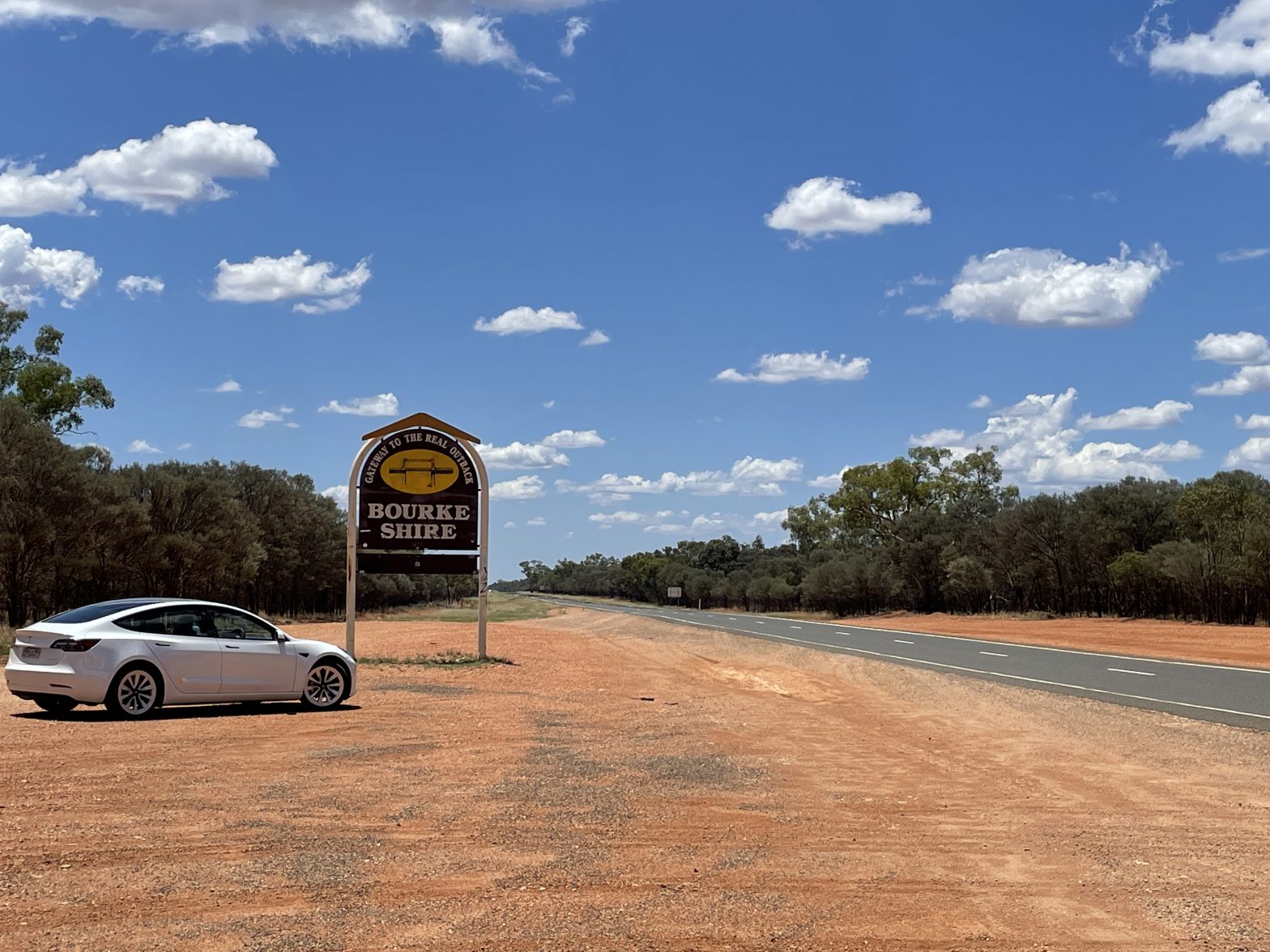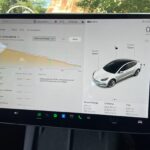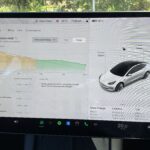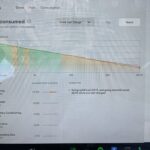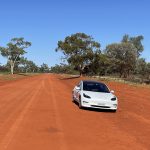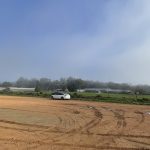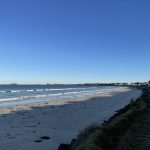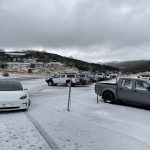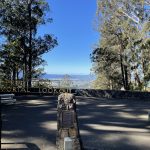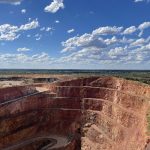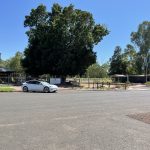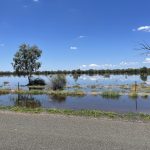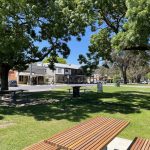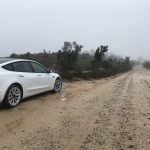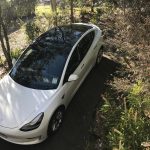My best real range in my EV Tesla 3LR is 610km and my lowest real range is 340km. My average is ~460km.
The figure is simply how far I traveled by the odometer divided by what percentage of my battery I used, expressed as km per 100%.
The lowest real range I have had was uphill during very cold weather in June 2023. I left Gundagai and travelled 174km uphill at 110km/hr to Goulburn, arriving in 6 degrees C. I used 51% battery, which is equivalent to 340km per 100% of battery. For the trip overall, from Melbourne to Sydney, my 808km trip travelling in 0 to 8 degrees C at 110km/h averaged equivalent of 378km for 100% of battery.
The highest real range I’ve had has been in warm summer weather. The trip from Bathurst to Sydney in summer of 2024 gave a higher range than average, of 610km for 100% of battery.
Most highway trips I travel at 110km/hr, and I average equivalent to 460km for 100% of battery
In April 2024, with my 3LR 2yr 7 mths old, my real range on a 4,849km return trip to Townsville at 100-110km/hr varied with conditions from 37.5km to 60.6km per 10% of battery with the overall average 437km per 100% of battery used.
Longest gap between chargers
The longest legs I have driven without a charger enroute has been 300km between Dubbo and Cobar and the 320km return trip Cobar to Bourke. Neither trip had charging available other than at Dubbo and Cobar, when I did them.
Longest drive without charging
The longest I have driven without charging has been 367km between Melbourne and Orbost, which used 80% of my battery. There were chargers enroute if needed, but I didn’t use them. The Energy App in the car shows the energy used in driving, plus the other energy used. It used 79.6% of battery in total on that 367.4km trip.

Type of EV
My EV is a 2021 Tesla 3LR which has now travelled 63,352 km over past 2 yrs 7 mths. Trips used as examples above, were in Standard acceleration mode. Tesla recommend driving in Chill acceleration mode during cold weather, if you want to have the most range, but my trips are all in Standard acceleration mode, which uses more energy.
Use of electricity
1000 km of travel, at my average consumption rate of ~15kWh/100km would use ~150kWh of electricity.
Some sample costs of electricity are set out in the table here.
Change in EV Battery Capacity Over Time
In October 2021 the EPA range figure on my 3LR car touchscreen said 538km for 100% and in Jan 2024, 2 years 4 mths and 59,427 later, the EPA range figure on my 3LR car touchscreen, said 513km for 100%. So if that is a sign of battery capacity, it means ~ 4.7% reduction over that 59,427km in my Tesla 3LR EV.
In April 2024, after 68,274km, my touchscreen showed 459km for 90%, equivalent to 510km for 100%. That’s a 5.2% reduction in capacity from new in 2021.
Tesla says it’s normal for estimated range to decrease slightly over the first few months before leveling off. Over time, you may see a gradual, but natural, decrease in range at full charge – this depends on factors such as the mileage and age of the Battery.
Tesla says that average capacity reduction is 12% after 320,000 kms (200,000 miles).
WLTP, EPA and ADR EV range figures
The WLTP and EPA test ranges are just different lab test protocols for comparisons between cars only, not real range. The WLTP test is a 30 minute lab test with average speed without stops of 53.5km/hr. My WLTP range for my 2021 3LR was 580km but that is not displayed in the car. It’s the EPA test range that is displayed.
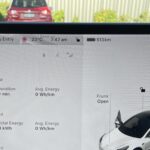 The driving range displayed on the top of the car touchscreen and app, shows an estimate of how far the car would travel with its current battery level, under the USA EPA lab test. When my 3LR was new at 100% the EPA figure was 538km and two years later was 513km (4.7% battery capacity drop after 2 yrs). The EPA figure displayed is based on 55% city cycle and 45% highway cycle EPA test protocol, that’s why on long highway trips, you will have less range than the EPA figure.
The driving range displayed on the top of the car touchscreen and app, shows an estimate of how far the car would travel with its current battery level, under the USA EPA lab test. When my 3LR was new at 100% the EPA figure was 538km and two years later was 513km (4.7% battery capacity drop after 2 yrs). The EPA figure displayed is based on 55% city cycle and 45% highway cycle EPA test protocol, that’s why on long highway trips, you will have less range than the EPA figure.
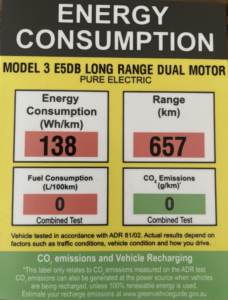 A third type of test is the ADR lab test. The Australian ADR 81/02 lab test is used on the fuel consumption windshield sticker in Australia. The Australian ADR 81/02 has a test phase average speed of 19km/hr in stop start traffic and long periods of idling and a second phase with average speed of 63km/hr. There is no testing for long periods of highway driving. The sticker from a 2021 Tesla 3LR, shows an implausible range of 657km, 77km more than the WLTP figure advertised by Tesla for that model of 580km. The test protocol would require driving at no more than average speeds of 19-63km/hr to get close to that range.
A third type of test is the ADR lab test. The Australian ADR 81/02 lab test is used on the fuel consumption windshield sticker in Australia. The Australian ADR 81/02 has a test phase average speed of 19km/hr in stop start traffic and long periods of idling and a second phase with average speed of 63km/hr. There is no testing for long periods of highway driving. The sticker from a 2021 Tesla 3LR, shows an implausible range of 657km, 77km more than the WLTP figure advertised by Tesla for that model of 580km. The test protocol would require driving at no more than average speeds of 19-63km/hr to get close to that range.
The Energy App
For real time energy use and range, refer to the Energy App, in the Apps section of your car’s touchscreen. It gives a breakdown of the total energy used by your car while driving and parked.
References:
Tesla on range https://www.tesla.com/ownersmanual/model3/en_au/GUID-4AC32116-979A-4146-A935-F41F8551AFE6.html?fbclid=IwAR1j4hHC30aUd-lSrp1TfwrJo1FemBXitO5z2ZrnFtfMyyVbAbyHgxV5ux8
Tesla on battery life https://www.tesla.com/ns_videos/2022-tesla-impact-report-highlights.pdf
Tesla on WLTP https://www.tesla.com/en_au/support/range-calculator-ref
Tesla on Cold Weather https://www.tesla.com/en_au/support/range#cold-weather
ADR81/02 https://greenvehicleguide.gov.au/pages/ToolsAndCalculators/FuelConsumptionLabel
Vehicle Standard (Australian Design Rule 81/02 – Fuel Consumption Labelling for Light Vehicles) 2008
https://www.legislation.gov.au/F2008L00649/latest/text
WLTP https://en.m.wikipedia.org/wiki/Worldwide_Harmonised_Light_Vehicles_Test_Procedure
USA EPA
USA EPA 2024 Model Guide
https://fueleconomy.gov
https://www.epa.gov/greenvehicles/fuel-economy-and-ev-range-testing

